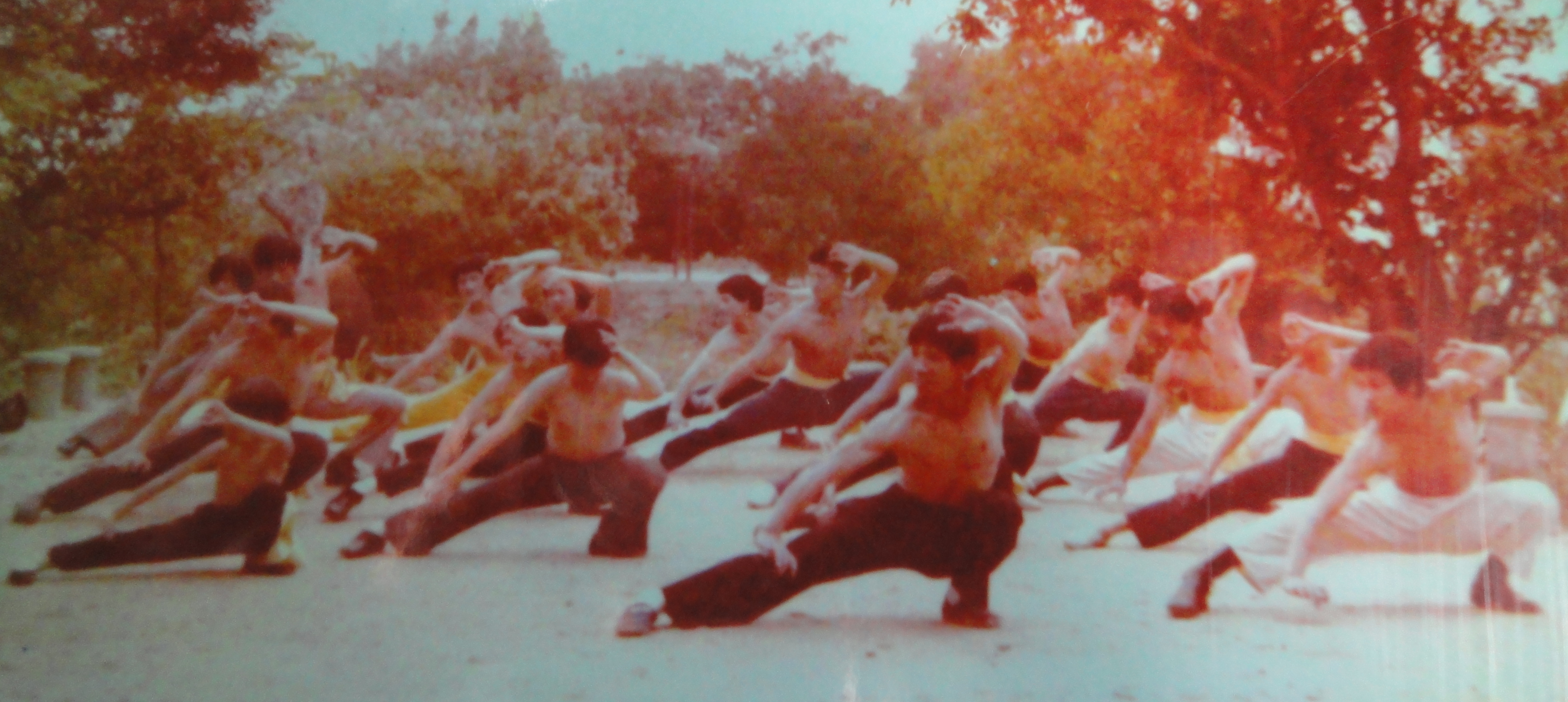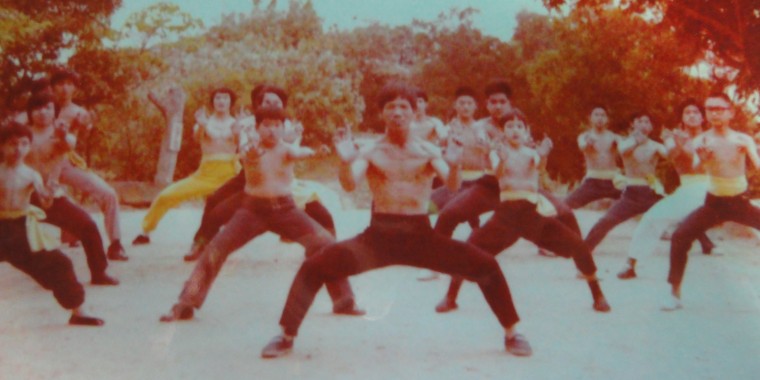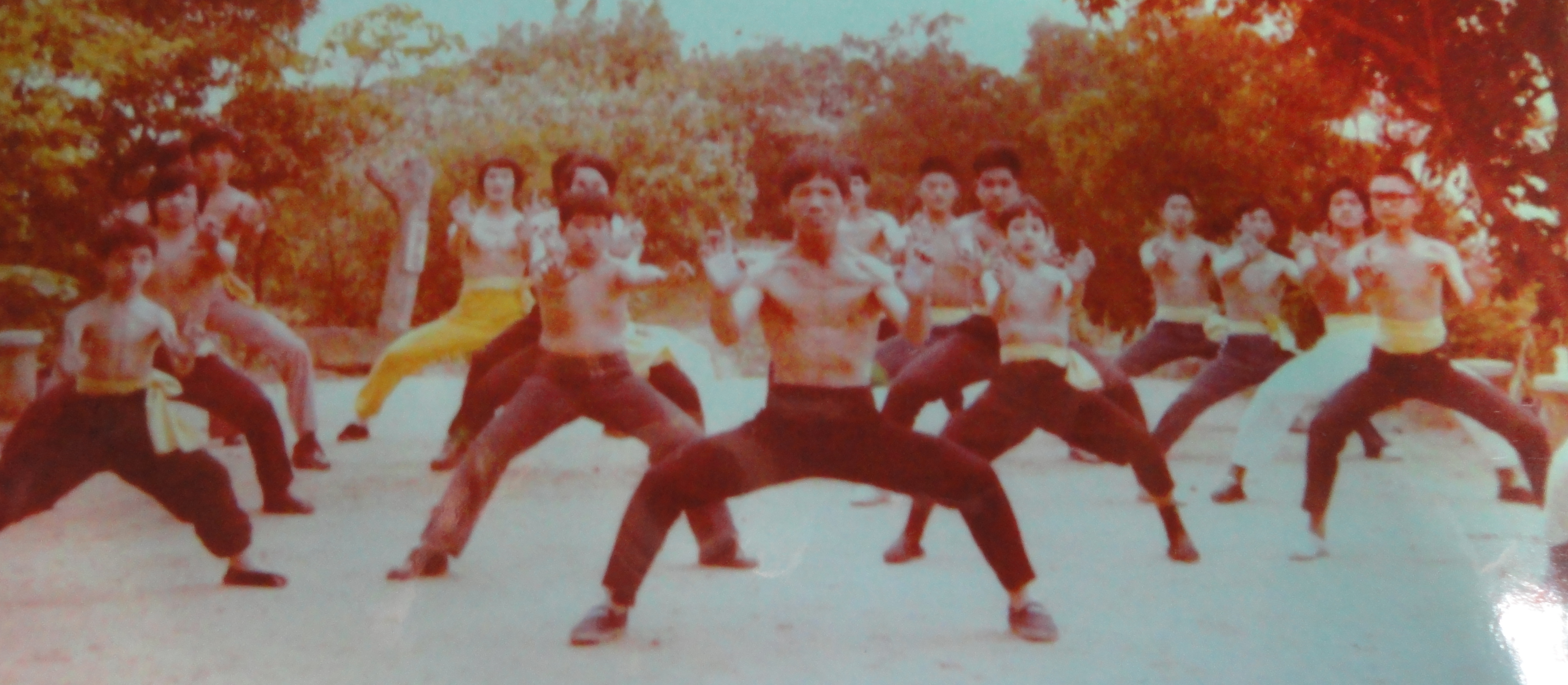The Unknown History of Taiwanese Five Animals Kung Fu
The Unknown History of Taiwanese Five Animals Kung Fu
Southern Shaolin Five Animals / Hung Ga Quan
by Travis Alschbach

Master Chang Ke Chi and students practicing Gong Zi Fu Hu Quan “Tiger Taming Fist” 1970’s Taiwan, R.O.C.
The Five Animals martial arts are synonymous with the Southern Shaolin Temple. The southern temple was lost during the Qing dynasty but the martial arts that originated there have spread around the world. There are countless derivative styles that have evolved and claim their origin from the southern Shaolin temple. Some of the main schools include Hung Ga, Li Ga, Lau Ga, Mok Ga and Choy Ga. Some of the derivative styles include Bai He (white crane), Yong Chun (wing chun), Choy Mok, Hung Fut, Cai Li Fo (choy li fut), Dragon style, Wu Zu Quan and Bak Mei.
The most widespread and easily recognizable of the southern Shaolin styles is the Hung Fist which originated in Fujian and Guangdong provinces during the Qing dynasty (1644-1911). The martial historian Tang Hao wrote that after examination the Five Animals of Shaolin are no different than the Hung Fist from Canton. Since its development in the Qing dynasty many distinct branches have become popularized. Some of the various Hung Ga schools are:
- Hung Ga Tiger and Crane school of Lam Sai Wing including the Taming the Tiger, Tiger Crane, Five Animals & Five Elements and Iron Wire forms, descended from Luk Ah Choi and mainly developed by Lam Sai Wing
- Zhanjiang Hung Ga also called called Ha Say Fu Hung Ga includes an individual sequence for each of the five animals as well as many unique weapon sets
- Five Pattern Hung Ga with an individual form for each of the five animals, attributed to Ng Mui and Miu Hin
- Southern Shaolin Hung Ga of Wong Kiew Kit which contains a unique Tiger Crane pattern as well as Tiger & Dragon, Black Tiger Claw and others, descended from Jiang nan
- Taiwanese Five Animals commonly called Hong Quan “Hung Fist” in Taiwan. This style includes an individual form for each of the animals as well as 18 Lohan Palms, Taming the Tiger, Southern Eagle, Tiger Crane and Snake & Cat , some of the more exotic weapons of Taiwanese Hung Ga include the folded fan, long handled hook and umbrella
The Five Animals Hung Ga was brought to Taiwan from Guangdong province around 1946 by Lin Jia Kun. arrived . Lin was a soldier in the Nationalist Army and came to Taiwan with the retreating army as the communists overtook mainland China. While in Taiwan Lin Jia Kun taught Chang Ke Chi who went on to become the predominant teacher of the Five Animals Hung Fist in Taiwan. Chang worked both as a teacher and in the martial arts film industry in Taiwan and throughout Asia beginning in the 1960’s.
Due to the large number of practitioners and growth of the style in Taiwan Lin Jia Kun’s Five Animals style is also known as Taiwanese Hung Ga although it originated in Guangdong and Fujian province. The Hung school with its many unique branches remains the most popular and widespread of the southern styles and is the closest representation of traditional southern Shaolin. The style has now spread all over the world with schools throughout Asia including Korea, Japan, Australia, South Africa, Europe, Canada and the United States.




